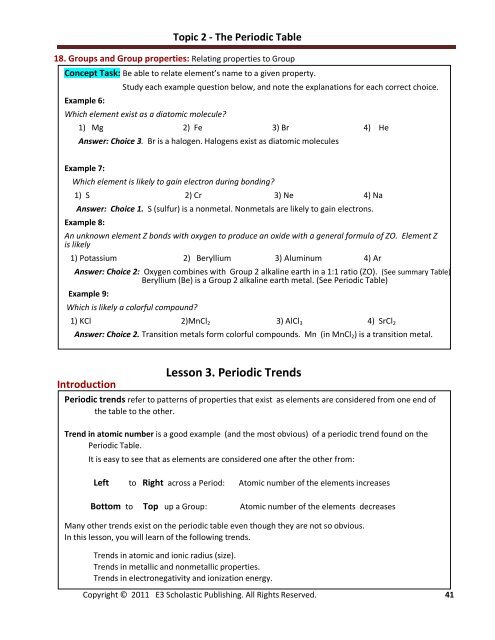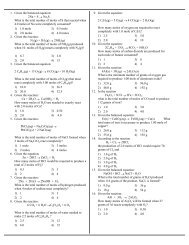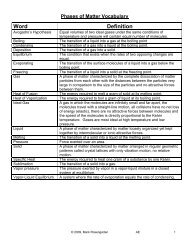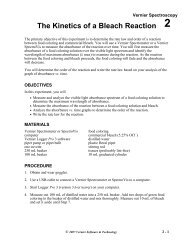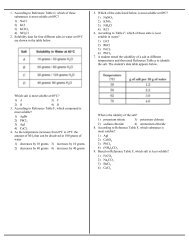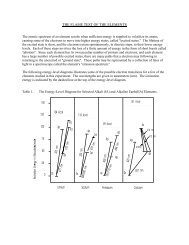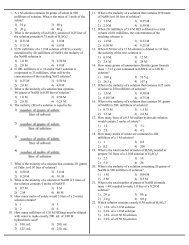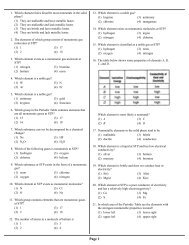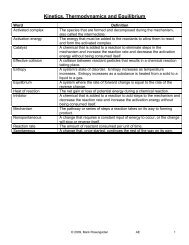Topic 1 - Matter and Energy - Revsworld
Topic 1 - Matter and Energy - Revsworld
Topic 1 - Matter and Energy - Revsworld
You also want an ePaper? Increase the reach of your titles
YUMPU automatically turns print PDFs into web optimized ePapers that Google loves.
<strong>Topic</strong> 2 - The Periodic Table<br />
18. Groups <strong>and</strong> Group properties: Relating properties to Group<br />
Concept Task: Be able to relate element’s name to a given property.<br />
Study each example question below, <strong>and</strong> note the explanations for each correct choice.<br />
Example 6:<br />
Which element exist as a diatomic molecule?<br />
1) Mg 2) Fe 3) Br 4) He<br />
Answer: Choice 3. Br is a halogen. Halogens exist as diatomic molecules<br />
.<br />
Example 7:<br />
Which element is likely to gain electron during bonding?<br />
1) S 2) Cr 3) Ne 4) Na<br />
Answer: Choice 1. S (sulfur) is a nonmetal. Nonmetals are likely to gain electrons.<br />
Example 8:<br />
An unknown element Z bonds with oxygen to produce an oxide with a general formula of ZO. Element Z<br />
is likely<br />
1) Potassium 2) Beryllium 3) Aluminum 4) Ar<br />
Answer: Choice 2: Oxygen combines with Group 2 alkaline earth in a 1:1 ratio (ZO). (See summary Table)<br />
Beryllium (Be) is a Group 2 alkaline earth metal. (See Periodic Table)<br />
Example 9:<br />
Which is likely a colorful compound?<br />
1) KCl 2)MnCl 2 3) AlCl 3 4) SrCl 2<br />
Answer: Choice 2. Transition metals form colorful compounds. Mn (in MnCl 2 ) is a transition metal.<br />
Introduction<br />
Lesson 3. Periodic Trends<br />
Periodic trends refer to patterns of properties that exist as elements are considered from one end of<br />
the table to the other.<br />
Trend in atomic number is a good example (<strong>and</strong> the most obvious) of a periodic trend found on the<br />
Periodic Table.<br />
It is easy to see that as elements are considered one after the other from:<br />
Left to Right across a Period: Atomic number of the elements increases<br />
Bottom to Top up a Group: Atomic number of the elements decreases<br />
Many other trends exist on the periodic table even though they are not so obvious.<br />
In this lesson, you will learn of the following trends.<br />
Trends in atomic <strong>and</strong> ionic radius (size).<br />
Trends in metallic <strong>and</strong> nonmetallic properties.<br />
Trends in electronegativity <strong>and</strong> ionization energy.<br />
Copyright © 2011 E3 Scholastic Publishing. All Rights Reserved. 41


